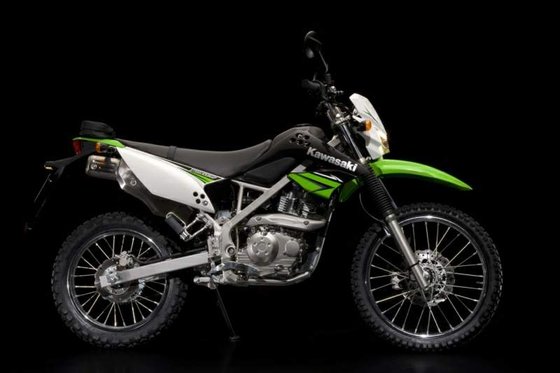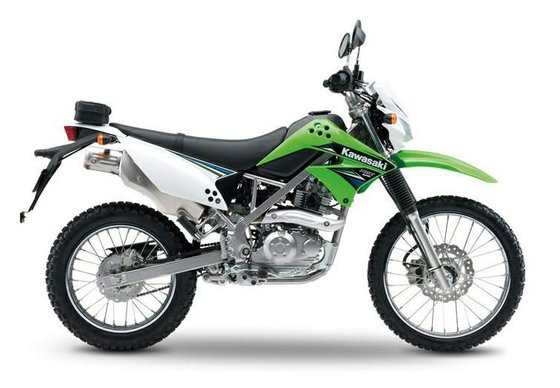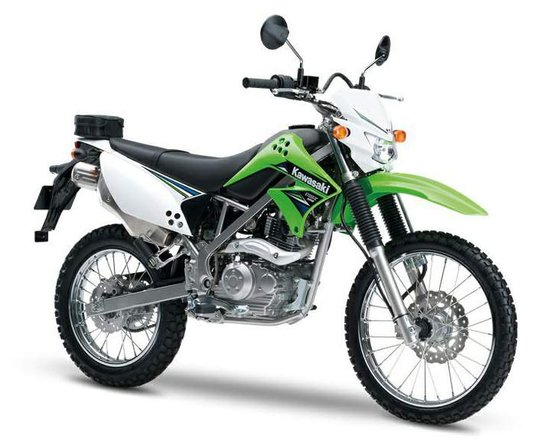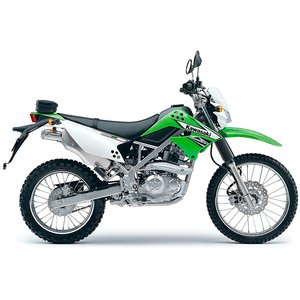Kawasaki KLX 125 [2010 - 2017]: A Lightweight Off-Road Companion That Packs a Punch

For riders seeking a balance between playful agility and rugged durability in the 125cc class, the Kawasaki KLX 125 (2010-2017) remains a standout choice. Designed as a gateway to off-road adventures and urban practicality, this generation of the KLX series carved its niche with a no-nonsense approach to lightweight motorcycling. After spending time with this machine on trails and city streets, here’s why it continues to resonate with riders.
Design & Ergonomics: Built for Accessibility
The KLX 125’s design screams functionality. Its minimalist bodywork, sharp angles, and iconic Kawasaki Lime Green livery give it a purposeful aesthetic. The 830 mm (32.7-inch) seat height is approachable for shorter riders, while the narrow profile allows easy leg reach to the ground—a confidence booster for beginners.
Standout features include: - Perimeter Steel Frame: Lightweight yet rigid, offering precise handling. - Petal Disc Brakes: 240 mm front and 190 mm rear rotors (9.4”/7.5”) with twin-piston and single-piston calipers, respectively. The wave-shaped design reduces mud buildup and improves cooling. - Spoked Wheels: 19-inch front and 16-inch rear wheels wrapped in knobby tires (70/100-19 and 90/100-16) strike a balance between trail grip and urban maneuverability.

The upright riding position and wide handlebars provide excellent control, whether navigating rocky paths or filtering through traffic. At 113 kg (249 lbs) wet, the KLX feels flickable—almost like an extension of your body.
Engine & Performance: Modest Power, Maximum Fun
The air-cooled, 124cc single-cylinder engine delivers 10.3 HP (7.5 kW) at 8,000 RPM and 10 Nm (7.4 lb-ft) of torque at 6,400 RPM. While these numbers seem modest, the KLX’s lightweight chassis transforms it into a lively performer.
Key highlights: - Fuel Injection: The Keihin 20mm throttle body ensures crisp throttle response, even at low RPMs. No carburetor headaches here! - 5-Speed Transmission: Gear ratios are well-spaced for both technical trails and highway cruising (up to ~90 km/h or 56 mph). - Wet Multi-Disc Clutch: Smooth engagement and durability under frequent shifting.

On dirt, the engine’s linear power delivery lets you focus on picking lines rather than managing abrupt surges. In the city, it’s zippy enough to dart ahead of traffic, though overtaking requires planning. The exhaust note is throaty for a 125cc, adding to the bike’s character without being obnoxious.
Suspension & Handling: Where the KLX Shines
The KLX 125’s chassis components were purpose-built for its class, not borrowed from larger bikes. This shows in its balanced geometry: - 33mm Telescopic Forks: 175 mm (6.9”) of travel soak up rocks and ruts without feeling wallowy. - Uni-Trak Rear Suspension: 180 mm (7.1”) of wheel travel and adjustable preload handle jumps and whoops with ease. - Ground Clearance: 255 mm (10”) lets you tackle logs and deep ruts without scraping.
The 27.1° rake and 101 mm (4”) trail provide stability at speed, while the short 1,285 mm (50.6”) wheelbase ensures quick direction changes. This isn’t a bike that fights you—it’s eager to pivot, slide, and explore.
Competition: How Does the KLX Stack Up?
Honda CRF125F
- Similar weight and power but carbureted (pre-2021 models). The KLX’s fuel injection gives it an edge in throttle response.
- CRF has softer suspension; KLX feels more capable on aggressive trails.
Yamaha TT-R125
- Air-cooled engine with slightly less torque (9.7 Nm). KLX’s 10 Nm offers better low-end grunt.
- TT-R’s drum front brake vs. KLX’s petal disc: KLX wins in braking precision.
Suzuki DR-Z125
- Heavier at 120 kg (265 lbs) and carbureted. KLX’s modern fuel injection and lighter build make it more versatile.
Verdict: The KLX 125 strikes a sweet spot between modern tech (FI) and off-road readiness. It’s the best choice for riders who want a low-maintenance trail companion.
Maintenance: Keeping Your KLX in Prime Condition
As a MOTOPARTS.store journalist, here’s how to maximize your KLX’s lifespan:
1. Oil Changes
- Use SAE 10W-40 oil (1.0L with filter). Change every 3,000 km (1,864 miles) or annually.
Upgrade Tip: Synthetic oils improve clutch longevity in harsh conditions.
2. Chain Care
- The 124-link chain needs regular cleaning and lubrication. Adjust slack to 50-60 mm (2-2.4”).
MOTOPARTS Recommendation: DID O-Ring chains for reduced maintenance.
3. Valve Adjustments
- Check every 6,000 km (3,728 miles). Clearances:
- Intake: 0.04-0.08 mm (0.0016-0.0031”)
- Exhaust: 0.08-0.12 mm (0.0031-0.0047”)
4. Air Filter
- Clean foam filter every 1,000 km (621 miles). Use biodegradable cleaner and filter oil.
Pro Tip: Carry a spare pre-oiled filter for long rides.
5. Brake Fluid
- Replace DOT 4 fluid every two years. Bleed lines if sponginess occurs.
6. Spark Plugs
- NGK CR7HSA (standard) or CR7HIX (iridium). Gap to 0.8 mm (0.031”).
Final Thoughts: Who Should Buy the KLX 125?
This bike isn’t about brute force—it’s about accessibility. New riders will appreciate its forgiving nature, while seasoned off-roaders can exploit its agility for technical trails. The fuel injection system and low upkeep costs make it a hassle-free companion.
Whether you’re upgrading the suspension with aftermarket parts or swapping to street tires for supermoto antics, the KLX 125 is a blank canvas for customization. At MOTOPARTS.store, we’re ready to help you make it uniquely yours.
Ride hard, ride smart, and let the KLX 125 remind you why lightweight bikes are the soul of motorcycling.
Specifications sheet
| Engine | |
|---|---|
| Stroke: | Four-stroke |
| Max power: | 7.5 kW | 10.0 hp |
| Max torque: | 10 Nm |
| Fuel system: | Fuel Injection (Keihin 20 mm throttle body) |
| Max power @: | 8000 rpm |
| Displacement: | 125 ccm |
| Max torque @: | 6400 rpm |
| Bore x stroke: | 54.0 x 54.4 mm (2.1 x 2.1 in) |
| Configuration: | Single |
| Cooling system: | Air |
| Compression ratio: | 9.5:1 |
| Number of cylinders: | 1 |
| Valves per cylinder: | 2 |
| Dimensions | |
|---|---|
| Wheelbase: | 1285 mm (50.6 in) |
| Dry weight: | 112 |
| Wet weight: | 113 |
| Seat height: | 830 mm (32.7 in) |
| Overall width: | 770 mm (30.3 in) |
| Overall height: | 1090 mm (42.9 in) |
| Overall length: | 1980 mm (78.0 in) |
| Ground clearance: | 255 mm (10.0 in) |
| Fuel tank capacity: | 7.0 L (1.85 US gal) |
| Drivetrain | |
|---|---|
| Final drive: | chain |
| Gear ratios: | ['1st: 2.917 (35/12)', '2nd: 2.000 (32/16)', '3rd: 1.474 (28/19)', '4th: 1.182 (26/22)', '5th: 1.000 (24/24)'] |
| Chain length: | 124 |
| Transmission: | 5-speed, wet multi-disc manual clutch |
| Rear sprocket: | 47 |
| Front sprocket: | 14 |
| Electrical | |
|---|---|
| Starter: | Electric |
| Idle RPM: | 1400 ± 50 |
| Ignition: | Digital DC-CDI |
| Maintenance | |
|---|---|
| Rear tire: | 90/100-16 |
| Engine oil: | 10W40 |
| Front tire: | 70/100-19 |
| Brake fluid: | DOT 4 |
| Spark plugs: | NGK CR7HSA or NGK CR7HIX |
| Spark plug gap: | 0.8 |
| Forks oil capacity: | 1.2 |
| Engine oil capacity: | 1.0 |
| Engine oil change interval: | Every 5000 km or 2 years |
| Valve clearance (intake, cold): | 0.04–0.08 mm |
| Valve clearance check interval: | 24,000 km / 15,000 mi |
| Valve clearance (exhaust, cold): | 0.08–0.12 mm |
| Recommended tire pressure (rear): | 2.2 bar (32 psi) |
| Recommended tire pressure (front): | 1.5 bar (22 psi) |
| Chassis and Suspension | |
|---|---|
| Frame: | Perimeter steel |
| Trail: | 101 mm (4.0 in) |
| Rear brakes: | 190 mm petal disc, single-piston caliper |
| Front brakes: | 240 mm petal disc, twin-piston caliper |
| Rear suspension: | Uni-Trak linkage system, 180 mm (7.1 in) travel |
| Front suspension: | 33 mm telescopic fork, 175 mm (6.9 in) travel |
| Rake (fork angle): | 27.1° |



















